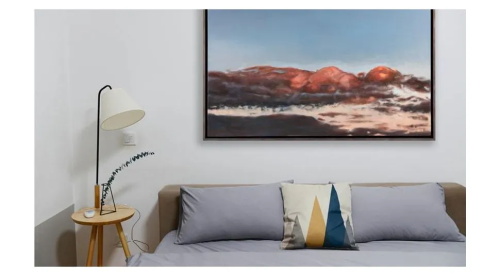How Your Beloved Oil Paintings Could Be Polluting Your Sanctuary?

Oil paintings have long been prized for their rich hues, depth, and ability to transform a room into an immersive experience. Designers often layer them above mantels or in home studios, believing that fine art elevates the lifestyle of a space. Yet this very charm can belie a less-apparent cost: traditional oil paintings rely on solvent-based media and pigment formulas that date back centuries, often before any safety standards existed.
Understanding the Chemistry: VOCs and Solvents
Most oil-painting techniques use solvents—like turpentine or commercial odorless mineral spirits (OMS)—to thin paint and clean brushes. These solvents emit volatile organic compounds (VOCs), which can irritate eyes, nose, and throat, and contribute to long-term indoor air pollution if used in poorly ventilated spaces. Even “low-odor” or “odorless” spirits continue to off-gas VOCs for weeks or months after use; studies show that the bulk of off-gassing occurs within the first six months but may persist longer in closed environments. Chronic exposure to solvent vapors has been linked to headaches, dizziness, and in severe cases, neurotoxic effects such as tremors and convulsions.
Heavy Metal Pigments: A Legacy of Lead, Cadmium, and Cobalt
Beyond solvents, the pigments themselves can harbor toxins. Traditional “white lead” (basic lead carbonate) was used for its opacity and quick drying; cadmium pigments yield brilliant reds and yellows; cobalt gives deep blues. These heavy metals can leach dust and particles over time, entering the body through inhalation, dermal contact, or accidental ingestion. Lead is especially insidious: it accumulates in bones, interferes with neurological development, and is classified as a probable human carcinogen. Cadmium and cobalt also carry risks of organ damage and hypersensitivity reactions with prolonged exposure.
Practical Tips for a Safer Creative Space
● Ventilate Religiously: Always paint near open windows or use exhaust fans to clear VOCs as you work.
● Limit Time in Fumes: Avoid lingering in freshly painted rooms until solvents have dissipated—typically several days for minimal odors, up to months for complete off-gassing.
● Switch Solvents: Consider non-toxic alternatives such as pure cold-pressed linseed oil or citrus-based cleaners rather than turpentine or OMS.
● Use Respiratory Protection: When sanding, cleaning, or handling old canvases, wear a respirator rated for VOCs and particulates to minimize inhalation.
The art supply industry has innovated safer options: water-mixable oil paints eliminate the need for harsh solvents; titanium-white and organic pigments can replace lead and cadmium; low-VOC and zero-VOC varnishes help seal artworks without continued off-gassing. By selecting these modern materials, you can maintain the tactile luxury of oil paintings while keeping your living space fresh and hazard-free.
Through informed choices and conscientious studio habits, you can continue to envelop your home in the timeless beauty of oil paintings—without unwittingly turning your sanctuary into a source of silent toxins.



